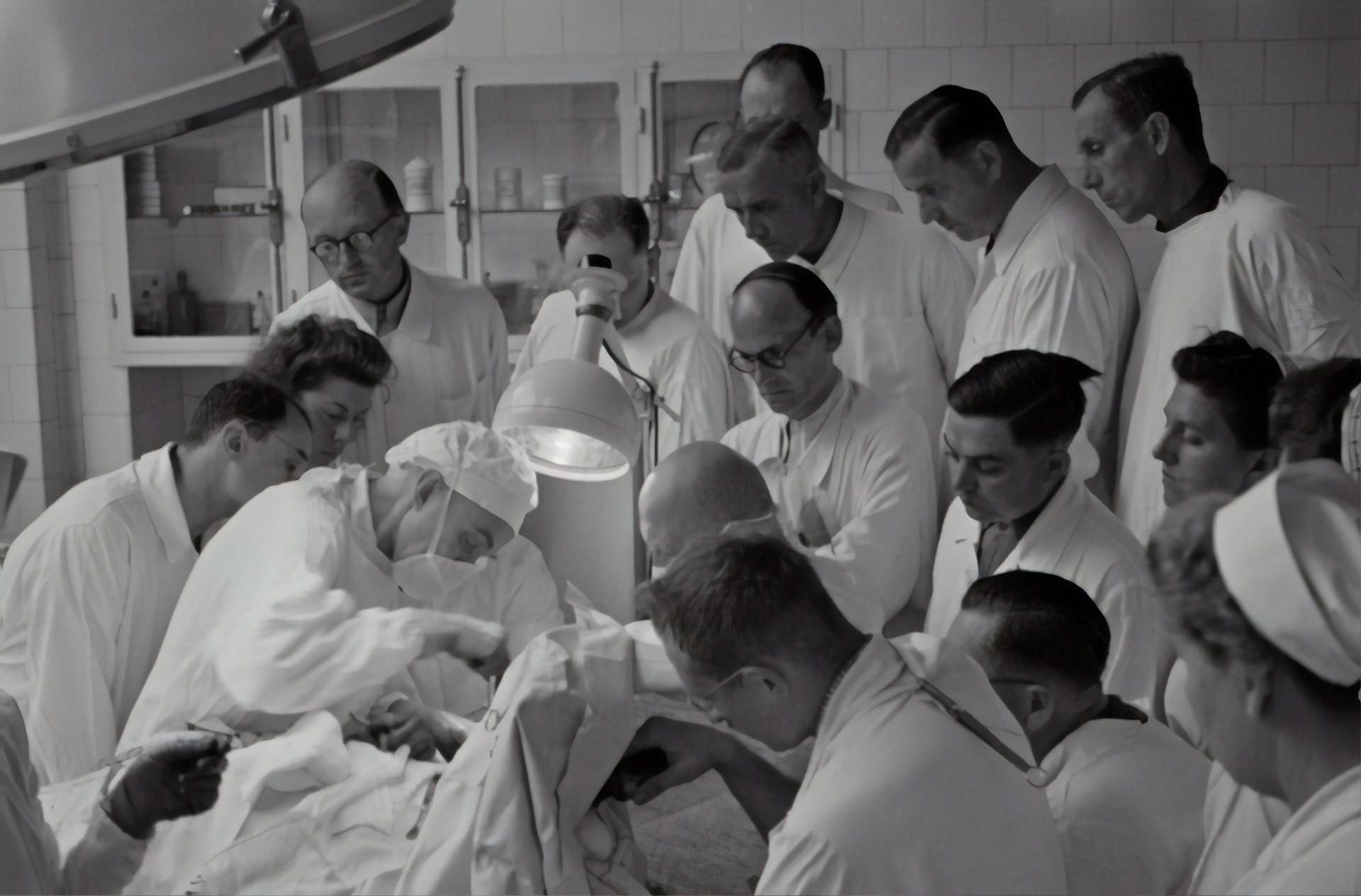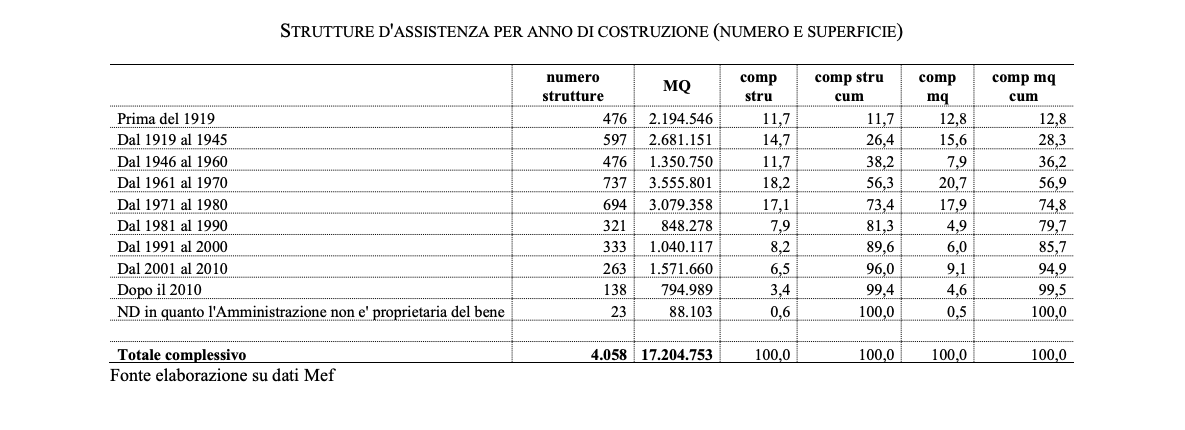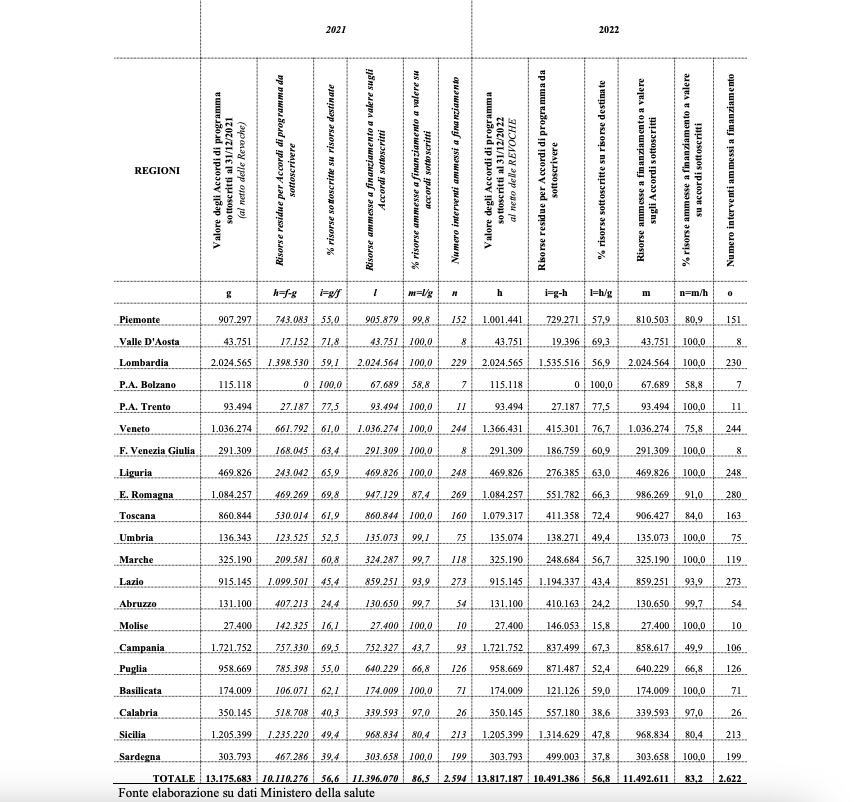Italian hospitals are falling apart but it is not a problem of funds

In Italy, a third of hospitals are not compliant with either fire safety or anti-seismic standards and the number of care facilities built after 1991 are fewer than those before the war. There would be funds to use but not all regions exploit them, according to the Court of Auditors. Facts, numbers and comments
It's the usual refrain: we knew but nothing was done to prevent it. The fire that broke out in the night between Friday and Saturday at the Tivoli hospital was an expected disaster. In addition to being among the worst healthcare facilities in the country in terms of performance, according to the latest report from the National Agency for Regional Health Services (Agenas), it is also among the oldest hospitals, which would require renovation and upgrading interventions. norm. In fact, as reported by the Italian Federation of healthcare and hospital companies (Fiaso), "one third of Italian hospitals are not compliant with fire regulations, as well as those on anti-seismic safety".
And it's not even a problem of funds because, according to what was stated by the Court of Auditors, those are there but the regions are not spending them.
HOW MANY PRE-WAR HOSPITALS ARE THERE
Among the antiquities of Italy are its hospitals. From the hearing last May in the Social Affairs Committee of the Accounting Judiciary of the Senate as part of the investigation into healthcare construction, it emerged that of the 4,058 care facilities present in the area, only 734 were built after 1990, and that they therefore less than 33 years old. While those that date back to before the end of the Second World War are 1,073.

THE FUND TO MAKE HOSPITALS SAFE
In May the Court of Auditors also found that the resources still to be used were "just under 10.5 billion" and represented "around 43% of the sums attributed to the program". Established with law 67 of 1988, there is in fact a fund called "article 20", dedicated to hospital construction, which should serve to build new healthcare facilities or renovate and fix existing ones.
WHICH REGIONS ACT AND WHICH DON'T
As the Court of Auditors observes, this data "hides considerable differences between regions". In particular, "there are 7 regions that have above average resources to be used with 4 regions in particular that have signed agreements for less than 40% of the available sums". “The comparison between the state of the program in 2016 with that of more recent years – he continues – confirms the importance of the unused sums; there are 10 regions that have not brought forward new agreements despite having obtained financing for all the resources of the agreements signed".
Among the most virtuous are the autonomous provinces of Bolzano (100%) and that of Trento (77.5%), Veneto (76.7%) and Tuscany (72.4%). Among those who have not done their homework, Molise (15.8%), Abruzzo (24.2%), Calabria (38.6%), but also Lazio stops at less than half (43, 4%).

Even the Cergas research center of Bocconi University, in its Oasi report cited by Repubblica , underlines that "outside of Lombardy, Veneto, Emilia-Romagna and Tuscany, in the last twenty years no success has been achieved, even in the presence of funding, to invest significantly in the renewal of hospital care networks and even less in the local area". Furthermore, "the creation of new hospital facilities has almost never been accompanied by the rationalization of the existing offer".
WHY THE FUNDS ARE NOT USED
The Court of Auditors believes that the failure to use all the resources available to the regions is attributable to the "increasing use of current resources to finance investments, despite the strong accounting penalty of 'spending' the asset 100% in the year of acquisition", but also to the "difficulty of easily accessing capital resources".
"It is therefore clear – states the Court – that the difficulty in easily accessing capital resources combined with the lack of availability of current resources for the financing of investments could lead to the failure to renew company infrastructures in some local areas , resulting in greater health risks (connected to charges deriving from litigation for clinical risk), greater management and maintenance costs, as well as lower effectiveness of treatments. Conversely, in NHS bodies, where it is possible to draw resources from current financing for the implementation of investments (especially those which are urgent and lack deferrability), this creates an increase in current expenditure, which could also imply a risk of minor or difficult provision of LEAs".
Even for the president of Fiaso, Giovanni Migliore, interviewed by Repubblica , "the path to obtaining the resources is cumbersome, the money often arrives many years after the request and when the tenders are launched, too much time has passed". Furthermore, in some cases, Migliore adds, the structures that would require interventions, as in the case of the Tivoli hospital, are centers that are the only point of reference in the area, making it effectively impossible to stop assistance services to carry out the work.
WHAT THE COURT OF AUDITORS PROPOSES TO DO
With regard to the procedure for obtaining the funds, the Court of Auditors therefore requests a simplification: "[…] it seems appropriate to provide for the definition of a more streamlined procedure for the interventions contained in the Agreements of minor importance (small investments, extraordinary maintenance, purchases of equipment, etc.), maintaining greater detail (but adapting the analysis to the most recent procedures, for example, those used by the EIB) for investments in new structures in which the impact and consistency with the existing model is more important".
“In any case – he continues -, it is necessary to review the procedures to eliminate non-essential steps as much as possible, increasing and centralising, after sharing the Agreements, the management of additions or modifications in a few actors. This would allow us to reduce the procedural burdens required by any changes that may become necessary. It is then a question of continuing to work to overcome the problems of approaching more complex planning methods through the development of skills within administrations, counteracting the progressive impoverishment of technical structures on this front. The possibility of accessing funds or participating in international tenders requires, in any case, developing skills in managing public contracts. Also on the basis of the experience gained with the PNRR projects, it is a question of evaluating whether to make resources available to be used to improve the quality of the design or entrust the task of assistance to one or more public bodies, but always with the objective of growing adequate internal structures".
This is a machine translation from Italian language of a post published on Start Magazine at the URL https://www.startmag.it/sanita/gli-ospedali-italiani-cadono-a-pezzi-ma-non-e-un-problema-di-fondi/ on Mon, 11 Dec 2023 11:41:33 +0000.
